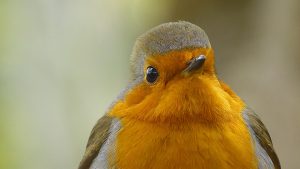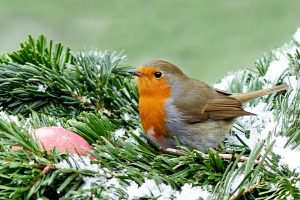The robin is the National Bird of the UK. Okay, that may not be official, but everyone knows and loves the tuneful, Christmassy songbird. I am lucky enough to have a regular visit from a robin that will perch on my outstretched hand for the measly sum of a few mealworms.

I know that they are territorial birds and often fight to the death to protect their territory, which made me wonder, does this affect their numbers and are robins in decline?
Happily, the robin population of the UK is stable. The birds are widespread and there are around 4,200,000 breeding pairs.
Table of Contents
Conservation Status of the Robin
All UK birds are split into one of three conservation statuses;
Red
The most concerning of all, the species are in global decline, are endangered, and in need of urgent action.
Amber
Showing a moderate decline in the UK in the previous 25 years. Birds and their populations in this category are cause for some concern.
Green
The least critical group of all, these species of birds have healthy populations and are zero cause for concern.
The UK robin sits comfortably within the green conservation status.
Why it seems like robins are in decline
Because robins are so territorial it is common to see them alone or with their mate. There may be times when you don’t seem to see any birds at all. More often this is during mid-summer, from July to August. This is when adult birds moult and become more introvert. Instead of their usual gregarious character, they hide away and become retiring.
High mortality rates
It is thought that between 40% and 70% of robins fail to make it to 1-year old. There are a few possible reasons for this, one of which is their inability to cope with harsh winters.
When the temperatures dip particularly low it is possible for a robin to lose 10% of its body weight in one night. Whilst their stored body fat should see them through a day or 2, if temperatures remain very low for long periods, they often don’t survive.

When they are cold and drowsy the robin isn’t as alert and susceptible to being caught by predators. There are also those robins that lose their battles in fights over territory.
We can help the robin population by ensuring there’s a fresh supply of food to supplement their diet, especially through the winter.
Mealworms are their favourite but they can gain much-needed energy from suet, peanuts, cheese, fat, and cake crumbs.
Although the robin’s mortality rate is very high, multiple successful broods and longer life
-expectancy of those robins that make it past their first year, mean that the overall robin population has increased by 45% since 1970.
Final thoughts…
Are robins in decline? Thankfully, no they’re not. Their high mortality rate is compensated by their high birth rates.
There are plenty of robins to be seen virtually all over the UK, and if you’re really lucky, one will choose to befriend you as you potter away in the garden.
